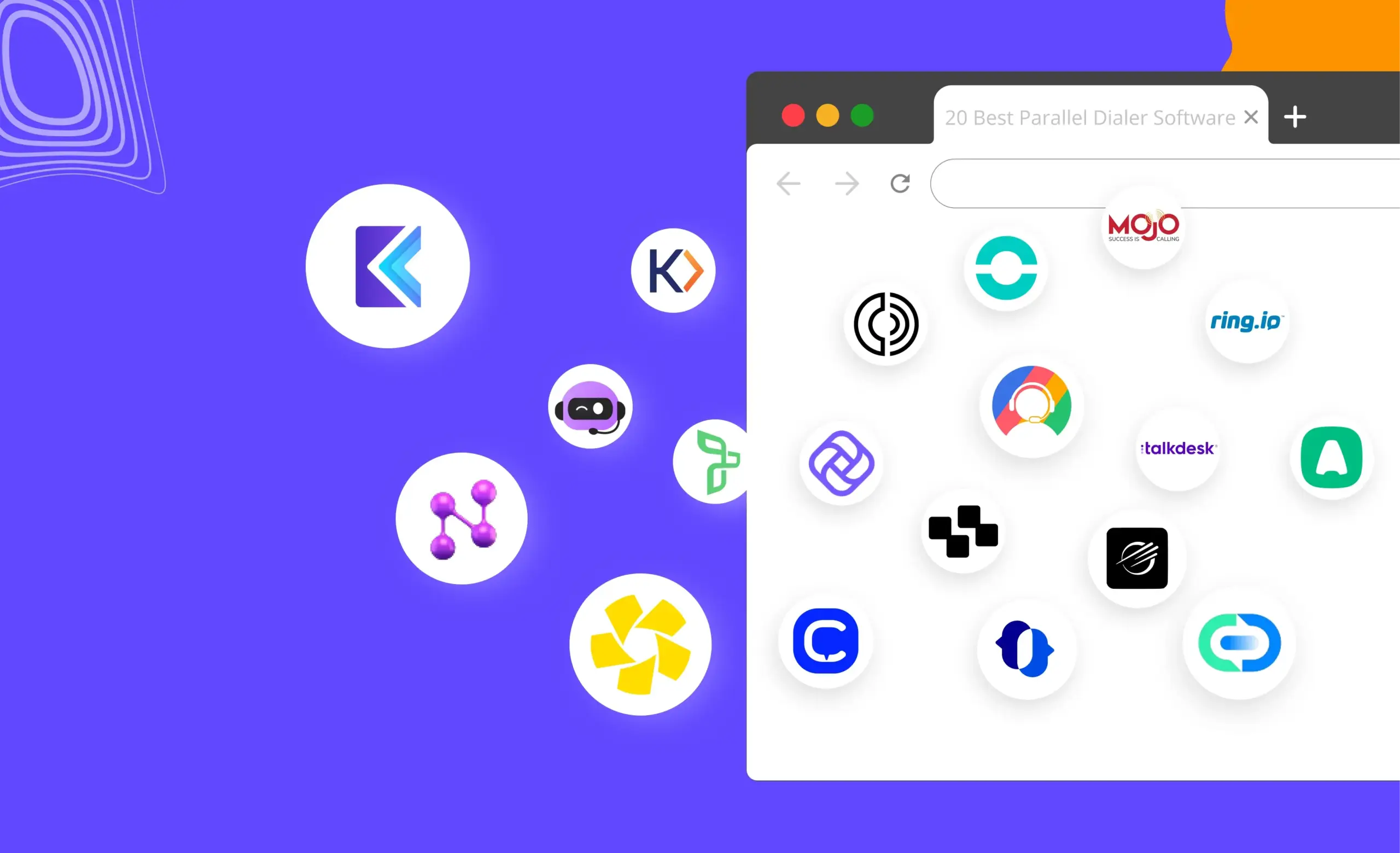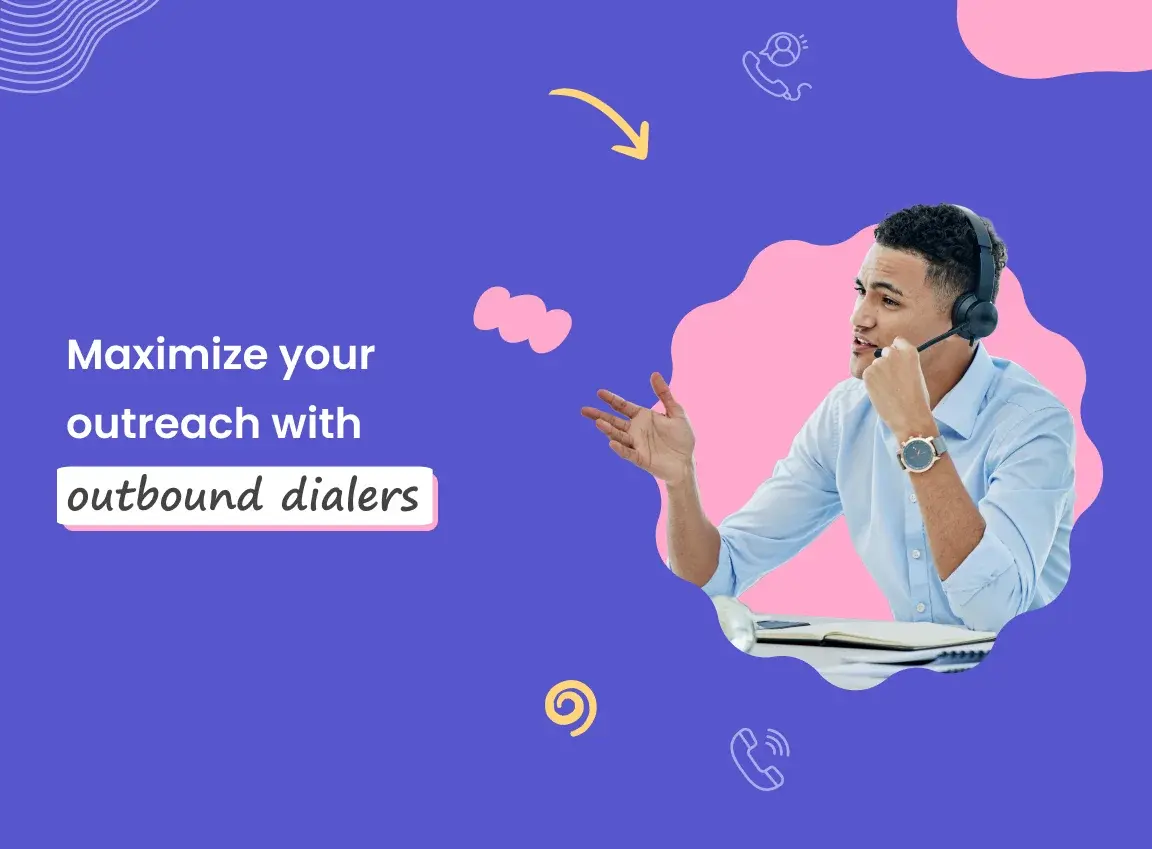Your prospect picks up a cold call, you get past your opener, and you deliver your pitch. Just when you think the call is going well, the prospect says, “We don’t have the budget.”
What do you do?
Do you hang up and move to the next number because the prospect said they can’t invest in your solution?
No, not so soon. This is a common cold call objection. And quite deceptive as well. Companies might tell you they don’t have the budget, but that doesn't mean they aren't buying anything.
Like everybody else, your prospect is cautious with their money. And they’re not convinced that investing in your solution would benefit them. So, you need to find a way to know the actual reason behind this objection and disarm them without putting your prospects on the defensive.
In this blog, we'll explore why prospects cite budget constraints and equip you with effective strategies for successfully overcoming this objection.
Why Do Prospects Say “We Don’t Have the Budget?”
Hearing the “We don’t have the budget” objection may seem like you’ve hit a dead end even before starting a conversation.
Over half of reps (55%) who participated in a survey feel the single biggest reason for promising sales opportunities to fall apart is budget. Sometimes, this may be a genuine reason, but more often than not, it’s an easy way to brush you off when they don’t want to engage with you.
This objection could have different meanings, like:
- Timing issues: They may be in the middle of budget cycles, strategic planning periods, or fiscal quarters where budget availability is restricted.
- Risk aversion: Prospects may prefer to stick with familiar solutions or maintain the status quo rather than take a chance on something unfamiliar.
- Not an immediate priority: Your prospects may have other priorities that take precedence over investing in your offer.
- Lack of perceived value: The prospect doesn't fully understand the value of your product or service.
No matter what the objection is, your job as an SDR is to grab the prospect’s attention, ensuring they not only hear your offer but are eager to explore it further. Let's dive into strategies that will have you confidently steering the conversation in your favor.
Tackle “No Budget” Cold Call Objection Using ‘Reason Why’ Statement
When your prospects say, “We don’t have the budget” during a cold call, it could be a legitimate reason.
But there are also instances where prospects use this objection as a convenient excuse to end the conversation simply because they don't like the feeling of being sold to, they want to avoid feeling pressured or manipulated.
In this case, the most effective way to disarm this objection is by using the ‘reason why’ statement.
A 'reason why' statement lets you use the prospect's objection itself as the reason for the call.
It piques the prospect’s curiosity and opens the door for a conversation.
Here are 4 ways you can use the ‘reason why’ statement to handle the “No budget” objection:
1. Highlight ROI
Highlight the return on investment your solution will deliver once the prospect adopts it. Calculate and present the potential financial impact of your solution over time, illustrating how it outweighs their initial investment.
When to use: This approach is right when you want to grab your prospect's attention by highlighting ROI for growth and cost savings.
Example:
- ROI in terms of growth
[Prospect’s Name], I completely understand, and that’s exactly why I am calling you. While comparing your company's performance against industry standards, I noticed [pain point] may be hindering your growth. Recently, we helped [company in prospect’s industry] achieve X% increase in revenue by solving [pain point] within just X months. We’re confident that our solution can help you achieve similar, if not better, results. Would you be interested in exploring how we can help your company achieve similar results?
- ROI in terms of cost savings
[Prospect’s Name], that’s exactly why I’m calling you. I noticed from your recent LinkedIn post that you're looking to [solve pain point]. Based on your current [tech stack], I estimate that implementing our solution could potentially lead to X% in cost savings over the next [timeframe]. Would you mind taking a look at our solution to see exactly how we can help?Why does this work?
- By quantifying your solution's potential cost savings, you're making the benefits tangible. This helps prospects understand the direct impact your solution can have on their bottom line, making it easier for them to justify the investment.
- Concrete evidence of ROI instills confidence in your prospect. It shows you've done your homework and understand their challenges and goals. This can make them more receptive to taking your solution more seriously.
2. Offer a No-Obligation Demo
Offer them a no-obligation demo with your product specialists to show your solution’s value. Make it clear to your prospects there's no pressure to make a purchase, sign a contract, or take any specific action. It's purely an opportunity for them to explore your product with no strings attached.
When to use: This low-pressure opportunity is for prospects who are reluctant to invest in new solutions because of their past negative experiences or who are using a competitor tool.
Example:
I completely understand that you may not have the budget right now. The reason why I’m calling you is to show how we can help you [solve or achieve XYZ]. I’d like to offer a no-obligation demo for you to make an informed decision for your team. If you like what you see, we can figure out the next steps together, and if you don’t, you can walk away no strings attached. Does that sound fair?How does this help?
- You’re empowering them to make an informed decision without financial commitment. They can evaluate your solution's features, benefits, and suitability for their specific requirements. Ultimately increasing the likelihood of considering your solution in their future purchases.
- Offering a no-obligation demo demonstrates confidence in your solution. This confidence can reassure prospects and make them more willing to try your solution.
3. Provide Social Proof
Shift the focus of the conversation from cost to value, and make your prospects see the long-term benefits of your solution with social proof.
Share case studies, testimonials, or success stories from existing customers who have achieved significant results with your solution.
When to use: This approach is right for prospects who don’t see immediate value in your offer.
Example:
I completely understand, and that’s exactly why I’m calling you. Many of our clients initially had similar concerns, but after experiencing the value our solutions provide, they found it to be a worthwhile investment. In fact, just last month, we worked with [Company Name]. We helped them achieve [Similar company goals] within [specific timeframe], which resulted in [a quantifiable outcome, such as cost savings or revenue growth].Why does this work?
- By providing social proof, you establish credibility and show that your offer has delivered tangible results for others. This helps alleviate any skepticism the prospect may have about the value of your product.
- When prospects see that other businesses, especially those in similar industries or facing similar challenges, have achieved success with your solution, it instills confidence in their decision-making process. They feel reassured that investing in your product is worthwhile and can yield positive outcomes for their organization.
4. Follow Up With Value-Added Content
Even if the prospect is not ready to commit immediately due to budget constraints, continue nurturing the relationship by providing valuable content, industry insights, or relevant resources that demonstrate your expertise and reinforce the value of your offer over time.
When to use: This approach is right for prospects who either cite genuine budget concerns, such as being locked up in a contract, or don’t have an immediate need for your solution.
Example:
Hey [Prospect’s name], I appreciate you being honest about not having the budget. Just so when you’re ready, you don’t have to research. You’ll have all the information in front of you. Could I have the opportunity to get this information in front of you and keep you in the loop on what we’re doing and what’s going on?Why does this work?
- Budget constraints can change over time, and the prospect may eventually find themselves in a position to make a purchase. By consistently nurturing the relationship and providing valuable content, you build trust and credibility with prospects, making them more receptive to your offerings when their budget constraints ease or their priorities shift.
Things You Should Avoid When Prospect Says “We Have No Budget”
So far, we’ve discussed what you should say to tackle the “No budget” objection. Now to tackle the “No budget” objection smoothly, you must also know what not to say.
If you say the wrong things to counter this objection that could leave the prospect frustrated, they may share their negative experiences with other potential buyers, which can damage your company's reputation and make it harder to attract new customers.
Let’s zoom into the things you should avoid when prospects cite budget constraints:
1. Avoid Making Assumptions
When you make assumptions, it can signal to the prospect that you're not truly listening or understanding their needs. This lack of empathy and understanding can erode trust in the relationship, making it harder to move forward.
Example:
1. Are you sure you don't have any budget? Most businesses allocate funds for this type of solution
2. Our solution is a must-have for companies who look to [solve problem]. You can surely cut something from your budget to make room for our solution.2. Avoid Pressuring the Prospect
Questioning your prospect's priorities or resorting to urgency tactics can come across as aggressive or pushy. It conveys that you’re doubting their decision-making capability and could give the impression that your sole intention is to push a sale.
Example:
1. You say that you don’t have a budget. But isn’t [solving X] a priority for you right now?
2. I understand you don’t have a budget right now, but can you check internally again?3. Avoid Giving Steep Discounts Early On
Offering discounts too early in the sales process, especially without fully understanding the prospect's needs and constraints, can devalue your product or service. It suggests that your initial pricing might not have been fair, which can lead to questions about the quality or value of what you're offering.
Example:
1. [Prospect’s name] I totally understand. We can offer discounts on our initial pricing if budget is the only concern. Are you interested?
2. [Prospect’s name], We have a very limited period offer, and I think it’d be highly beneficial for your organization to use our solution.4. Avoid Disregarding Their Concerns
Ignoring or dismissing a prospect's concerns can make them feel unheard and undervalued. Prospects may view your unwillingness to address their concerns as a sign of incompetence, indifference, or lack of customer focus, ultimately creating a negative impression of you and your company.
Example:
1. Yeah, [Prospect’s name]. Budget constraints aside, let's talk about why our solution is perfect for you.
2. I know you don’t have the budget for us now, but given our unique features, it seems we outshine the competition. Would you agree?How To Sidestep the “We Don’t Have the Budget” Objection in Cold Calls Entirely?
So far, we’ve seen the underlying reasons prospects say, “We don’t have a budget,” how to disarm the objection using the ‘reason why’ statement, and what you should avoid saying when prospects pose this objection.
One sure-shot way you could potentially minimize hearing this objection is by qualifying your prospects and building a targeted sales prospecting list before you start your cold calling.
To create a targeted list,
- Identify ICP-fit prospects based on company size, revenue, and trigger events like leadership changes, funding, mergers and acquisitions, etc.
- Next, segment them based on their intent, placing high-intent prospects at the top and low-intent prospects at the bottom.
With such a well-curated list, you’ll save time and resources by focusing efforts on promising leads first, enhancing the efficiency and effectiveness of your sales process.
If you still encounter the “No Budget” objection during the conversation, disarm it by the 4 methods we’ve covered above:
- Highlighting the ROI
- Offering no-obligation demo
- Providing social proof
- Following up with value-added content
Now, you’re all set to handle this thorny “No budget” objection. Go book more meetings and crush your numbers!





